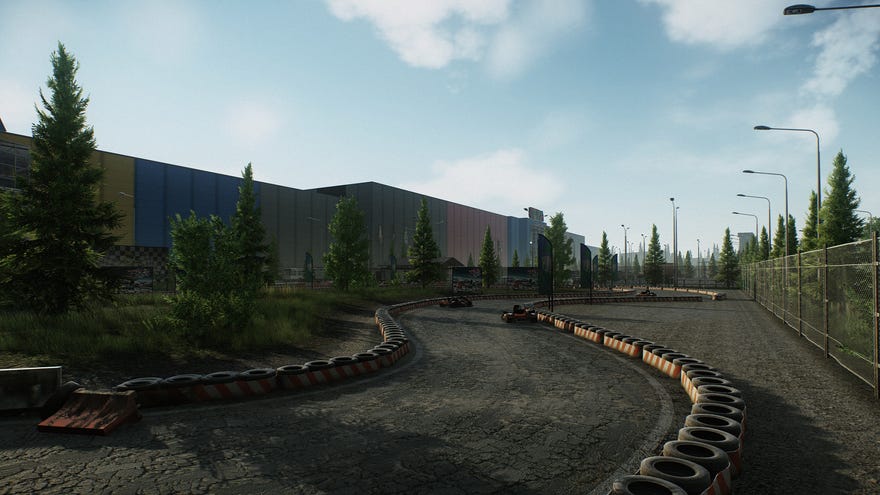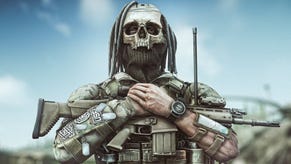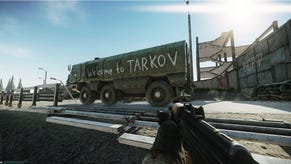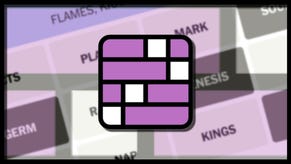Best helmets and armor in Escape From Tarkov
Armor stats and the best armor in the game explained
Looking for the best armor in Escape From Tarkov? Choosing the right armor for your raids in Escape From Tarkov is complex, with many factors to consider. Each vest, rig, and helmet has different coverages, weights, and protection levels. Cost and accessibility are also factors, and many players will be using subpar gear for weeks. To help you choose the right armor regardless of where you’re at in Tarkov’s lengthy progression curve, we’ve assembled this list of top armors, along with an explanation of armor stats in Tarkov.
Escape From Tarkov: armor stats explained
Armor in Tarkov comes in two forms; body armor and armored rigs. You can choose to either wear an armor vest with an unarmored tactical rig over the top, or just wear an armored rig, but you can’t stack an armored rig on top of body armor. Sometimes an armored rig can simplify your kit and reduce your carry weight, but your choice between the two will likely be financial most of the time.
Unlike many games, where armor and helmets serve as damage reduction multipliers for incoming fire, armor in Tarkov can quite literally stop bullets. If your armor stops a round, you will take a small amount of “blunt damage.” High-level armor in Tarkov doesn’t just let you survive an extra hit or two; it lets you completely shrug off low-quality ammo.
The first stat to look for is the level or class of an armor piece. Armor and helmets are graded with levels 1-6, with 6 being the toughest to penetrate. Generally speaking, armor is ineffective against ammo with penetration greater than or equal to the armor’s class times ten. So, a bullet with 35 penetration will likely punch through level 3 or lower armor, but bounce off of level 6 armor.

An armor’s ability to stop bullets is also affected by its durability. Durability drops a bit when armor stops a round from piercing, and decreases more when it is penetrated. As durability drops, lower-penetration rounds will break through more frequently.
The reduced protection is based on the percent of the armor’s original durability, and an armor’s max durability decreases each time your repair it. So, for example, take the Slick Plate Carrier which has 80 base durability. A Slick that has never been repaired at 55/80 durability and a Slick that has been repaired several times at 55/55 durability will offer the same protection. We’ll talk about repairs in a bit more detail later.
Body armor and armored rigs can protect your thorax (chest), stomach, and arms. Each armor type lists the body parts it covers in its description. Since players and Scavs cannot protect their legs with armor, players with low-penetration ammo often aim for the legs.
Armor also has weight, which affects the player in multiple ways. Of course, it contributes to your carry weight, so heavy-duty armor naturally makes it harder to stay under the “overweight” threshold. Heavier armor also reduces your movement speed, turn speed, and ergonomics (a weapon stat that governs ADS speed), so ultra-heavy armor sometimes hurts more than it helps. You need to strike a balance between protection and mobility, and the best armors do that.
Armor materials and repairs
You can repair damaged armor from your out-of-raid stash by right-clicking it and selecting repair. Each time your repair armor, its maximum durability permanently decreases. You can choose one of three vendors for your repairs, with more expensive options impacting durability less. Generally, the difference in repair quality does not outweigh the steeper price. Most players take the cheapest option most of the time.
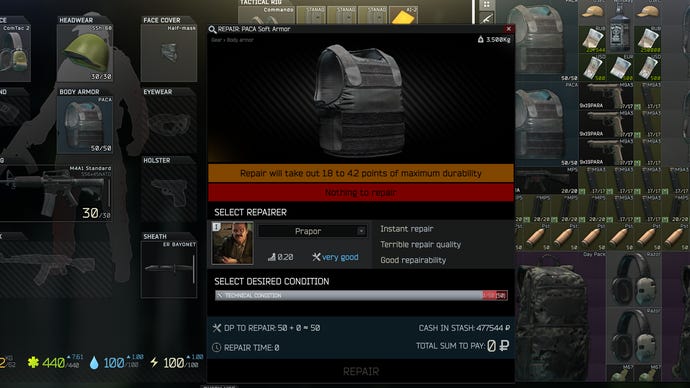
Each armor also has a material type, which has two effects. Different materials degrade at different speeds and repair at different rates. Ceramic armor, for example, breaks quickly and repairs poorly. Each repair drastically reduces ceramic armor’s maximum durability, so you are unlikely to get more than one or two uses out of it. Other materials like titanium repair more efficiently and can be used many times.
The best body armor in Escape From Tarkov
Below we’ll go through the best armor in Escape From Tarkov. These body armors and armored rigs have the best balance of mobility, protection, and affordability for their level. We’ve broken these down by level so that low-level players without access to high-end gear have options to consider. Level 1 protection only exists on helmets, hence its absence here.
Best level 6 armor and rigs
- LBT-6094A Slick
- Hexgrid
The Slick plate carrier has been the best body armor in Escape From Tarkov for some time and remains a top choice on patch 12.12.30. It is level 6, has surprisingly low movement penalties, has 80 durability, and repairs well. The Hexgrid is a lighter-weight alternative with a lower durability, though its sturdier material repairs better. All other level 6 armors are too heavy to consider, though you will see an occasional Tagilla rig.
Level 5
- 6B13 M Killa
- FORT Redut-M
- FORT Defender 2
- Arms Arma CPC
- TACTEC
- Crye Precision CPC (Goons Edition)
The Slick and Hexgrid might be the best armors in Tarkov, but you’re likely to see these level 5 pieces more often. Good level 6 armor is just really hard to come by for most players, so level 5 gear is more prevalent. The Killa armor is the best overall level 5 armor, but the FORT armors are nice accessible alternatives. The AACPC, TACTEC, and Crye Precision Goons rigs are all good options as well, trading stomach protection for storage.
Level 4
- 6B3TM-0M
- AVS
- TV-110
- Trooper
- A18
- M1
Level 4 is dominated by rigs, with the Trooper being the only vest worth your while. The AVS, TV-110, A18, and M1 all have great storage, while the 6B3TM has a great price tag. You may hear the 6B3TM referred to as the “rat rig,” as it is a popular option for players who want protection from Scav ammo but plan to avoid PvP encounters.
Level 3
- Kirasa
- 6B5-16 Zh-86 Uley
Level 3 armor options are extremely limited, and most players will get little use out of them. The Uley rig isn’t expensive, but the modest price is still a little hard to justify for such limited protection. If you feel you need more than a PACA at low levels though, it is just about the only option. The Kirasa vest also has solid durability, and is a decent choice if you can pull one off a Scav.
Level 2
- PACA
Level 2 armor won’t stop much, but it will prevent shotgun-wielding Scavs from blowing a hole through your midsection. That is the prime use of the humble PACA. Throw one on to protect you from Scavs when you have no other options, and try not to give any hostile players a chance to shoot back.

Escape From Tarkov: helmet stats explained
Helmets in Tarkov function like armor, but their protection zones work differently. Heads in Tarkov have five hitboxes to cover; eyes, jaw, ears, top, and nape. Virtually all helmets cover the nape and top of head zones, and many cover the ears.
However, many helmets also have attachment slots for mods like face shields, ear protection, night-vision equipment, and extra armor plates. The best helmets tend to be ones that can cover all five zones with a face shield and/or other add-ons. Remember that attachments have their own armor level independent of the helmet they’re attached to. Many meta helmets are level 4 but use a level 3 face shield.
Helmets also have a ricochet chance, rated from low to high. While even a high ricochet chance only results in a very, very small number of ricochets, it will occasionally save your life by causing a bullet to skip off your dome. When using low-level helmets that can’t stop high-penetration ammo, look for the ones with a high ricochet chance for some extra protection.
Best helmets in Tarkov
Like with armor, we’ve broken down the best helmets in Escape From Tarkov by level, so you have options at all player levels and budgets. We have not included any helmets below level 3, since you can access the best level 3 options as soon as you start playing.
Level 6
- Bastion (with extra armor plate)
The only true level six helmet is the Vulkan, which is extremely heavy and prevents you from wearing headphones. However, you can slap an armor plate onto a Bastion helmet to get level 6 protection for the top and nape zones. You forgo face and ear protection to do that, but most face shields are level 3 anyways. Whether the trade-off is worth it is for you to decide.
Level 5
- Altyn
- Rhys-T
The Altyn and Rhys-T are heavy, block headphones, and heavily restrict your FOV. However, they’re the only way to get level 5 coverage on your entire head. If you can deal with the downsides, this is the best all-around head protection you can get.
Level 4
- Bastion w/o plate
- FAST MT
- EXFIL
- Airframe
- ULACH
- Caiman
Level 4 helmets are the most common at high levels, where they are easily accessible. These options avoid the many downsides of the Altyn and Rhys-T but offer slightly worse protection. The available face shield options also max out at level 3, and won’t stop high-tier ammo. If you find face shields aren’t worth the investment, the ULACH will be your helmet of choice.
Level 3
- SSh-68
- 6B47 Ratnick-BSh
These helmets don’t offer a ton of protection, but they do offer a high ricochet chance at a low cost. They’ll protect you from some Scav ammo, and occasionally bounce off an enemy player’s armor-piercing round. The Ratnick has lower mobility penalties but is the more expensive option.
That's everything there is to know about armor and helmets in Escape From Tarkov! You should armor up for any raid where you think combat is even a slight possibility, so get familiar with these top tier options. If you're wading into Tarkov for the first time and trying to grasp the mechanics, we also have a guide to the best ammo types in Tarkov and what they do. We've also got a rundown of the recent Arena mode announcement and all the (limited) info on it.
